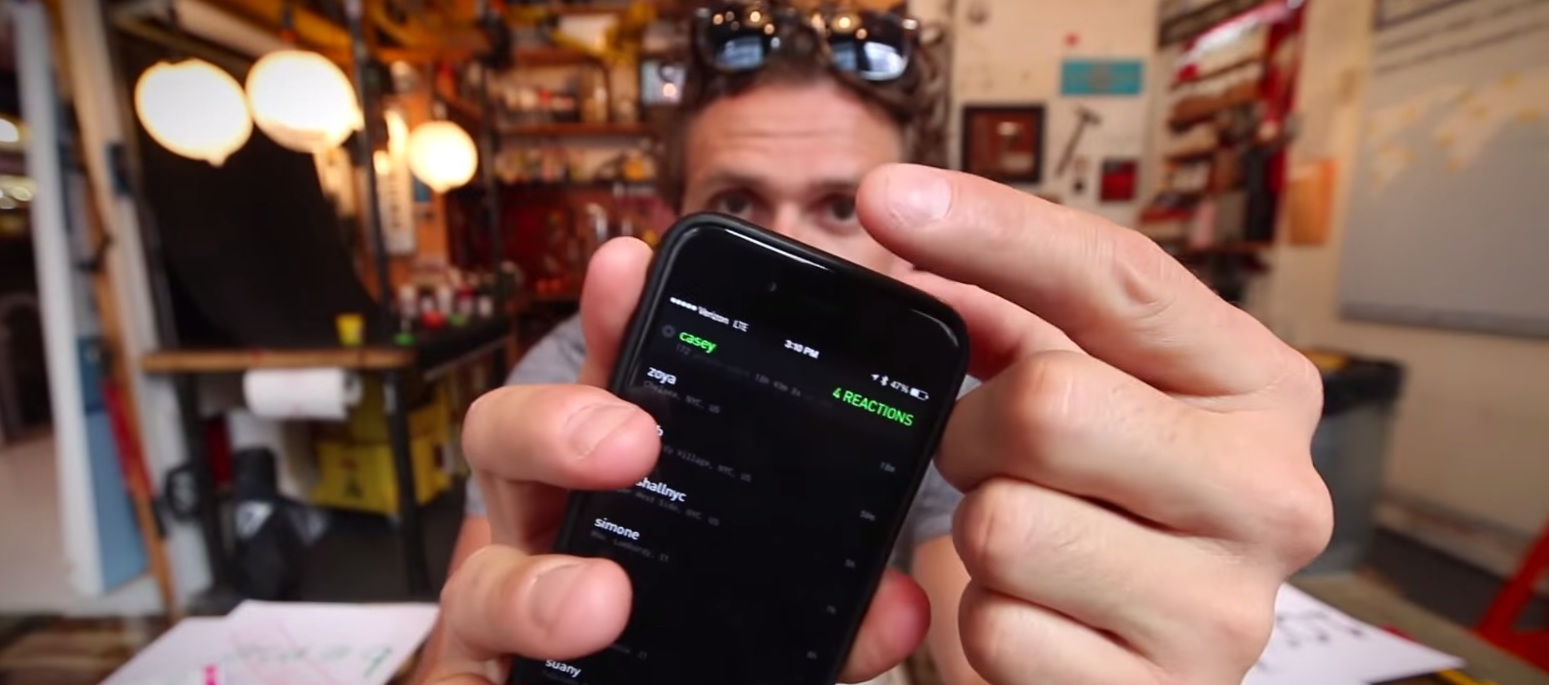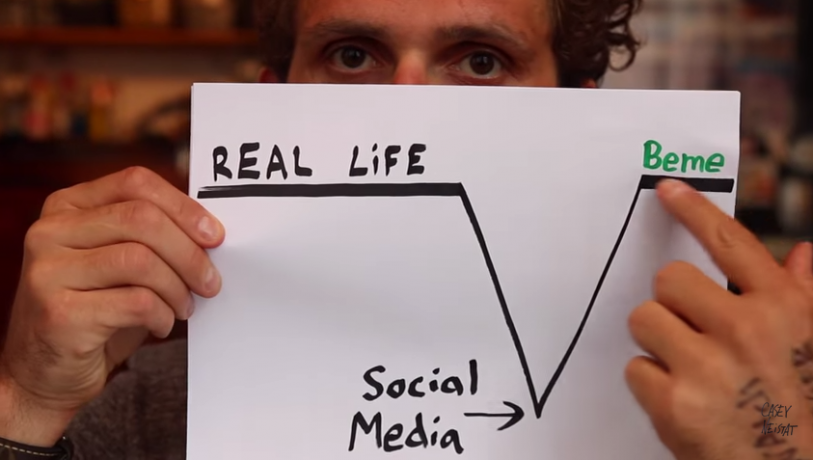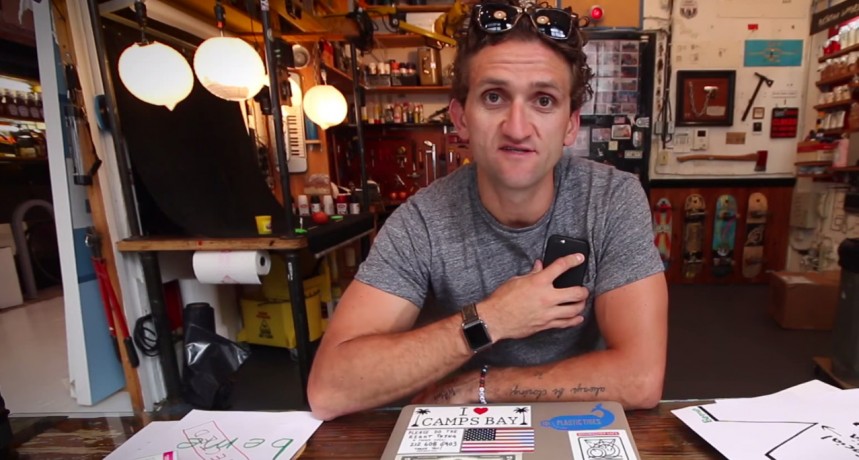
YouTube phenom and filmmaker Casey Neistat is aiming to redefine social media and has launched, Beme, a new social app startup focused on authentic videos & reactions.
by Jackson McNeill
July 21, 2015
Casey Neistat could technically be called a producer, film-maker, or director. But he’s probably better described as a self-made internet celebrity.
Neistat has spent most of his adult life online, making a name for himself through hundreds of YouTube videos, thousands of social media posts, and dozens of mostly-autobiographical films.
It’s no wonder, then, that Neistat’s new startup is based around social media, an app called Beme.
Released on Friday, Beme (pronounced “beam”) is part Snapchat, part Vine, and part something else altogether.
Like other social media apps, Beme allows you to take video of what’s happening around you, and then send that video to friends and other contacts.
Like Snapchat, you can only view someone’s video once, and can reply with a quick video reaction of your own.
But that’s where the similarities end.
In many ways, Beme is a rawer, stripped down version of its social media competitors.
There are no golden stars, hearts, likes, dislikes, thumbs-up buttons, or other bells and whistles. Nor does Beme allow users to employ filters, or add texts, graphics, or sound effects.
Neistat believes that this makes Beme feel more genuine, giving viewers a look at the “real you,” and avoiding what he feels is the overly sculpted façade associated with other apps.
Thus, it’s no coincidence that the app’s name is a mashup of the words “be me.”
“Social media is supposed to be a digital or virtual version of who we are as people,” he said in a statement. “Instead it’s this highly sculpted, calculated, calibrated version of who we are, told through filters that make our eyes bluer and carefully selected images to portray a version of who we are that doesn’t really resemble the reality of things.”
“Truth is so much more interesting than the fiction we’re used to,” he added in an interview.
Unlike other apps, Beme users also don’t need to look at their phone’s screen in order to take a video.
Instead, Beme (currently only available on iOS) uses the phone’s proximity sensor to determine when the phone is close to the user’s chest.
As the user brings the phone close to their chest in a pledge-of-allegiance like pose, Beme begins to record.
The phone beeps and vibrates to let you know it is recording, and it does so again when it has finished. Each recording lasts exactly four seconds.
“There’s no preview, there’s no review, and there’s never a need to look at your phone,” Neistat says in a video introducing the app.
Neistat feels that this screen-less interface helps users stay in the moment, and helps them present an un-curated version of themselves.
So far, however, the app has received mixed reviews. Some users like it, preferring its raw, stripped-down feel.
Others, meanwhile, have complained that Beme videos are poorly shot because users can’t see what they’re recording. And still others have criticized Beme for sacrificing being interesting in order to feel genuine.
In other words, some users find the content boring.
As one blogger put it, “I don’t want to experience your un-curated reality … any more than I want my boss to show up to work wearing swim trunks (even if it is his more true self)…. I go to [social media] not to see the reality of things, but precisely to see what is most beautiful or exciting or interesting.”
It remains to be seen whether Beme will take off.
For now, the app is available on Apple’s app store, but users will need an access code from twitter to unlock it (undoubtedly a tactic to make the app feel exclusive).
Topics: Small Business, Startups












